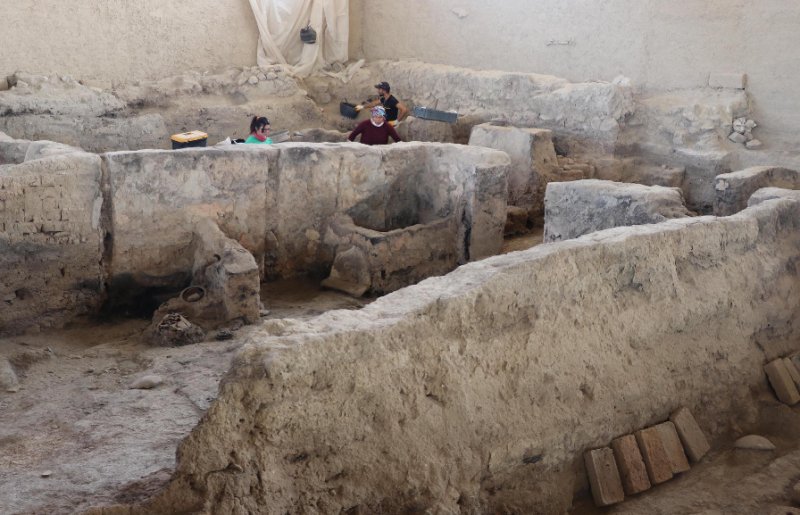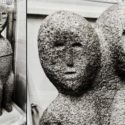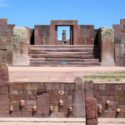4,000-Year-Old Textile Mill Unearthed In Western Turkey
In western Turkey, archaeologists unearthed parts of a loom, tools for creating textiles and accessories dating back four millennia.
“Last year we made some exciting findings related to early textile production. During this year’s excavations, the remaining parts of the house were unearthed,” Eşref Abay of the Ege University, head of the excavation team, told Anadolu Agency.
“As part of our efforts, we discovered a mill dating back 4,000 years. There are also parts of a handloom.” Beycesultan is thought to have been built in 5000 B.C., and they have found 40 consecutive cultural layers from the Late Bronze Age.”
Excavation works were first initiated at the Beycesultan Mound, one of the oldest settlements in Anatolia, by British archaeologists in 1954 and continued for six seasons. Beycesultan was a very big city, especially in the Late Bronze Age, divided by long streets in the east and west with two-story villas.

The works were carried out at two large areas on the western and eastern parts of the mound, as well as in different parts of the settlement in smaller areas.
Two years ago, archaeologists excavated a textile loom in a burnt condition. In this, we have found a few textile samples related to textile production with reeds, weaving knives, weights, and burnt textile pieces and even weaving differences. and as informed Esref Abay, head of the excavation team, “this textile production tradition continues until the modern age, possibly bypassing on generations.”
Over the last 12 years, excavations of one of the largest settlements in western Anatolia have unearthed enlightening information on the textile history of the region.
Abay recalled that previous findings were estimated to be 3,600 years old in the region.

“We found a structure here dating back to 1700 B.C. We think that it belonged to a wealthy family due to its size and rich equipment.”
“Findings that are thought to have been imported from the surrounding regions were found inside this house, which has very large storage rooms,” he said, adding that a 45-square-meter (484-square-foot) central room used as a workshop, as well as five other rooms used for different purposes were also discovered at the site.
Abay pointed out that thousands of loom weights used in textile production, seashells used in decoration, and burnt textile pieces have been discovered to date. The building was once engulfed in a giant blaze, but some parts survived it.
Abay and his team will continue with excavations and restoration work at the Beycesultan Mound in the western Denizli province. Researchers will focus on other houses identified in the layer.
The discoveries proved that Beycesultan was a major textile producer, and this extended the history of textiles in Denizli to a wider period of time.
Sources: ancient-archeology.com



